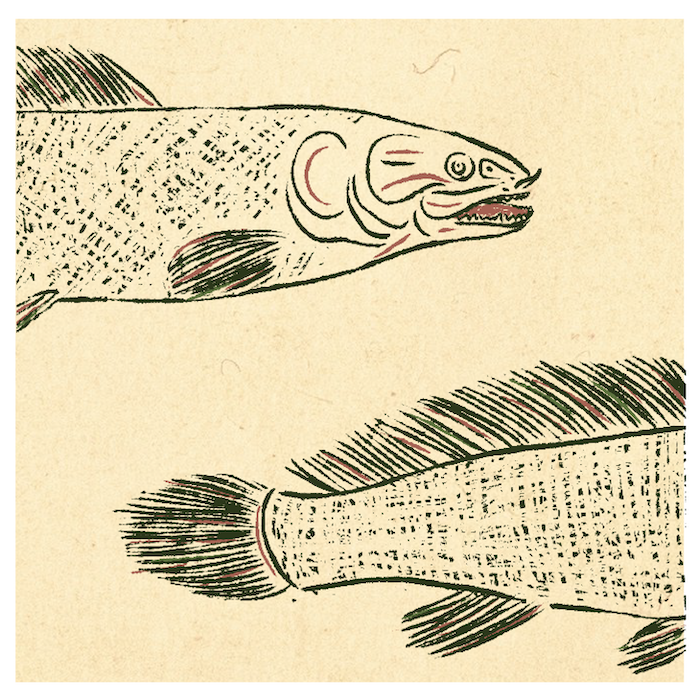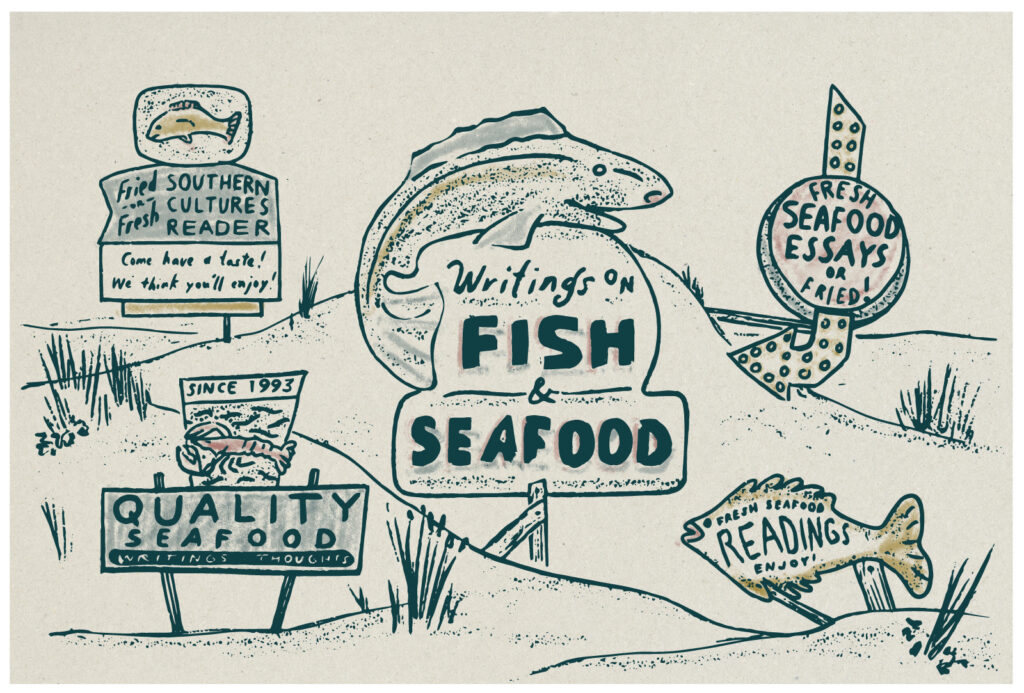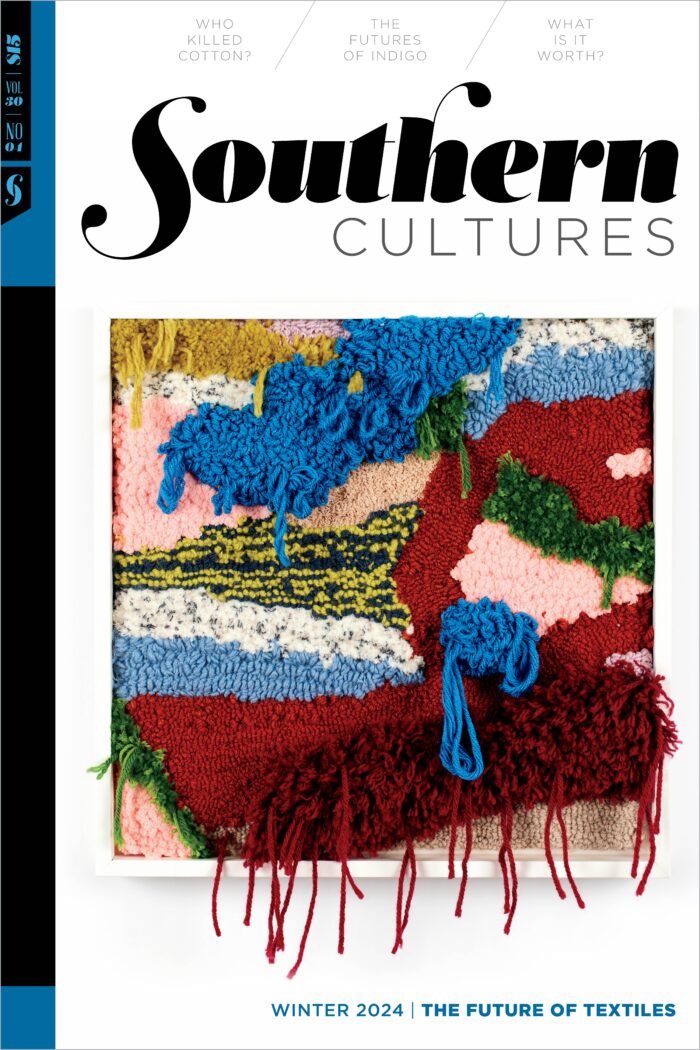Misshapen paleozoic fish, atavist,
tired of climbing the evolutionary ladder
and waiting for a thumb or feet
or the ability to breathe on land,
one year you just stepped off
and let the others pass you by . . .
And do you ever wonder?—That is, what if
you had climbed all the way to the top
like the sleek maniac salmon, the men, the whole
jittery collection of neurotic thoroughbreds?
—A. G. Sobin, excerpt from “Eating the Bowfin,” June 1979
If you are on the Waccamaw River in the summer months, you are hot. It is hot, and it is muggy, and the mirrorlike surface of the black water reflects the sun and sky. The reflection creates a continuum of color, expanse of water and sky gradated by vivid greens and earth browns along the banks. Getting toward noon, the black water sends the white-hot glint and shimmer of sunlight back up into your eyes. Dry spells drag water levels down and pull water temperatures up—the less water the hotter and slower things are. Crags of cypress knees suck water from the mud.
In this dead heat, a great deal of animal life on the river lulls. Low oxygen levels in hot, slow, shallow waters deplete the energies of most fish, and things reach a standstill. But suddenly there is a chorus in the eddies and pools that swell in the low-banked sections of the river. Mudfish (the local, vernacular name for bowfin) and gar break the surface of the water to get their oxygen from the air. Their breaching makes depressions in the water—mudfish leaving rippling circles and gar, with their elongated beaks, carving figure eights into the river’s surface. Their breaching troubles notions of space and propriety—neither land nor water, fish nor animal, above nor below.
Mudfish are ancient, the last remaining member of the order Amiiformes, and can be dated to the Jurassic Period some 145–200 million years ago. Mudfish evolved to breathe air and water, with a gas bladder that tolerates oxygen from air and gills for underwater use. This physical property, shared by gar, allows them to avoid aquatic hypoxia in the sluggish, shallow swamps in which they often live in the South. This capacity makes mudfish and gar, often referred to together as “trash fish,” particularly well suited to the three blackwater rivers that bracket the eastern border of the Carolinas: the Lumbee, the Pee Dee, and the Waccamaw.
Trash fish as a vernacular taxonomy coheres around racialized and classed attitudes toward fish and their consumption. Mudfish and gar occupy this status for many on the Waccamaw, and this ordering, a wholly unnatural one, is necessarily policed by the human inhabitants of the river. In a 1992 article titled “A Reappraisal of Gars and Bowfin in Fisheries Management,” the author cites a 1930 survey on gar that notes their position within this taxonomy:
It can-not . . . be said that they are universally despised, for the meat of gars is said to be esteemed by Negroes and to have been a common food of Indians . . . Possibly the ill favor with which it is generally regarded as a food fish by whites arises, as in the case of eels, with some suggestive features of its appearance more than from intrinsic qualities.1
This description offers an ostensible rebuttal to the general distaste for both mudfish and gar in communities throughout the United States, particularly among white anglers. In other texts, naturalists speak more brazenly about their fundamental hatred of mudfish. In the 1853 edition of Putnam’s Monthly, they are described as “heavy, sullen fish . . . savage and suspicious; no one would ever think of eating him, and a prudent farmer would hesitate to throw him to his hogs.” A letter in the February 1880 edition of Forest and Stream describes the mudfish (here, by another colloquial name, “grindle”) as “that most detestable fish-reptile . . . a greedy, ill-mannered and savage fish.” In the 1940s, the US Department of the Interior published bulletins advocating for increased consumption of mudfish to supplement wartime diets. Ruth Ellen Church, longstanding food editor at the Chicago Tribune, relayed these to her reading public, noting that the “peculiar fish . . . is better smoked than fresh.” But proximity and abundance together, even in times of scarcity, could not secure mudfish a lasting place in the American culinary mainstream.2
Mudfish transgress norms, and they transgress largely through the act of being seen. Rising to gulp air, a single mudfish can haunt a small body of water like a specter, here, then here, then there, and here again, leaving the impression that the body of water is filled with its kind. Gar surface, too, but a gar’s elongated, bony beak makes it much less likely to stay fixed to a fishing hook. A mudfish’s flat, wide head and gaping mouth make it much more apt to bite an artificial lure and stay hooked on it, again exposing them to the ginned-up hatred of bass anglers everywhere. If catching bass or bream is the object of an idyllic day on the river, mudfish are their foil—the large, muscular, toothy antagonist to the colonial quest to subdue the natural environment.

Rising to gulp air, a single mudfish can haunt a small body of water like a specter, here, then here, then there, and here again
Mudfish figure here as so many abstract evils are figured in southern landscapes: mongrels, transgressors, things that exist somewhere uneasily in imposed taxonomies. To be a transgressor there must be an order to transgress, and this order, like all orders, has to be policed. Mudfish get killed a lot, ritualistically. I was shooting film for a project last summer and found one floating on the surface of the Waccamaw River. A mudfish’s belly is white, but this one was gangrenous-looking—yellow-brown-green upturned on a palette of black. Someone had lacerated its jaw hinges so it couldn’t eat, then thrown it back so it would starve and die. I have seen them with .22 caliber bullet holes in their heads and once encountered one impaled on a stake on a riverbank. I have been reprimanded by other anglers on the river for not killing them when caught, warned that they need to be killed whenever possible.
I’m not going to pretend to account for all the reasons that people do this. Part of it is animated by utility—most people aren’t fishing for mudfish, and they’re frankly a pain to catch and release. Bream don’t have teeth, really, nor do bass. Mudfish do, and they’re big and their jaws are strong. I once wore an electrician’s glove to try and grab one by the mouth, and it bit through the glove and into my thumbnail. They are not, like bass or bream, easily disposed of either, and they serve as a reminder that you are not in a pastoral dream where all the creatures of the earth have gathered for your convenience alone. Some kill mudfish as punishment for this imposition. (Mudfish are like swamps in this way—a loathsome impediment to a certain narrative of progress.) Others kill them because mudfish are considered dirty or trashy; most people think that only poor people eat them, particularly poor Black people, and despise them on those grounds. The racialized narrative of ganoid fish as the domain of the Indigenous peoples of the United States and subsequently of Black sustenance relayed by Croker in 1930 continues to carry weight.
But some folks kill them because they believe they are invasive and that they have proliferated in this area because they are an ecological problem. There are fewer redbreast sunfish, my father’s favorite fish, in the Waccamaw River today than there were twenty years ago, according to reports from the North Carolina Wildlife Resources Commission, and some locals blame mudfish for this. In its own way, this is a kind of nostalgia: the time before mudfish. But the time before mudfish was 145 million years ago at the very least, and redbreast are likely dying due to a confluence of governmental decisions to stock the river with catfish (for the enjoyment of fishermen) and ecological changes to the river.3
In a cosmology of fish on the Waccamaw River, mudfish exist at the bottom. Their large, flat heads; their sharp, conical teeth; and their ability to surface and breathe the same air as us all expose them to violence, physical and symbolic, but these are also the things that make them so suited to the environments in which they—and we—live. There is something about our intertwined systems of race and class in them; there is a way that the eugenicist impulses of southern history get viscerally and erotically deployed in the spectacle of killing a mudfish. These things are interesting, but they are reflected in so many of the nodes that compose the complex of southern foodways: hierarchies of game meats, table etiquettes, attitudes toward processed foods, the litigation of “authenticity.” In that, mudfish are not unique but are a microcosm of a larger system.
Better to let them be something other than a symbol for the destructive elements of consumptive practice, however. Mudfish are the only fish on the Waccamaw River who are known to protect their young through the fry stage. Naturalists in the 1800s sometimes reported that they saw male mudfish swallow batches of their own young—sometimes thirty or forty at a time—to transport them to safety in thick vegetation when a predator approached, spitting them back out once out of the shadow of an invading alligator or catfish—or human. In the archive, many of these reports are noted with laughter by other scientists. But I can imagine that the lacerated jaws of the mudfish I saw floating on the Waccamaw once held thirty or forty babies, and that those babies are now grown, cruising some muggy backwater in the swamp, surfacing to breathe when it gets hot and continuing to transgress hierarchies imposed by people who haven’t been here as long as they have.

Fresh or Fried: A Southern Cultures Seafood Reader
Twelve fish(ish) tales from the archives (with accompaniments). Read the whole platter here.
Zachary Faircloth is a PhD candidate and graduate instructor at UNC-Chapel Hill in the Department of American Studies. He is currently a Townsend Family Southern Futures Graduate Scholar whose work blends critical ethnic studies, cultural studies, and geography. His dissertation project is titled “Small Waters: Race, Space, and Vernacular Worlds in the Eastern Carolinas.”
Illustrations by Julienne Alexander, YSSRS Creative
NOTES
- Coker quoted by D. L. Scarnecchia, “A reappraisal of gars and bowfins in fishery management,” Fisheries 17, no. 5 (1992): 6–12.
- “Fishing at the West,” Putnam’s Monthly Magazine of American Literature, Science, and Art, October 1853, p. 433; “Article 9,” Forest and Stream; A Journal of Outdoor Life, Travel, Nature Study, Shooting, Fishing, Yachting, February 19, 1880, pp. 14, 50; Mary Meade, “Popular Dish Is the Bowfin—or Dogfish: Ration Roundup,” Chicago Daily Tribune, January 6, 1944, p. 17.
- K. T. Rachels and J. M. Fisk II, “Fisheries resources of the Waccamaw River,” North Carolina Wildlife Resources Commission, Federal Aid in Sport Fish Restoration, Project F-108, Final Report 2021, Raleigh, North Carolina.

